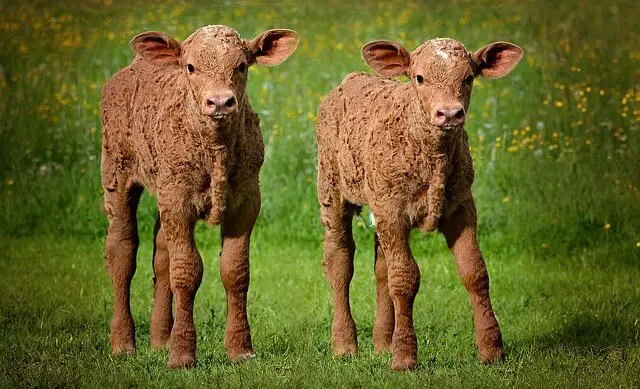How To Get A Horse To Drop His Sheath (Solved!)
Not every horse needs to have its sheath cleaned but for those that do, getting them to drop can be a challenge. This is more common if you haven’t had time to bond well with the horse. The last thing you should do is try to force your way through; do that, and you risk getting kicked. Don’t worry, I will show you how to get a horse to drop his sheath so you can give him a good wipe whenever you wish.
There are several ways you can get a horse to drop his sheath. These include giving him a specific type of massage, practicing regular grooming, using baby oil, and rubbing him with warm water. If all these methods don’t work (which I doubt), then you can sedate him or get him to the vet.
Sheath cleaning is not something many horses (even the nicest ones) are comfortable with as it involves a very sensitive and intimate area. So under no circumstance should you try to force it.
When carrying out these methods, stay in a safe position. Stand by the horse’s shoulder and try to reach into the sheath. Don’t ever go in between the legs!
How do you get a horse to drop his sheath?
Below are five ways to get a horse to drop his sheath. These methods work for all male horses, whether it’s a stallion, mare, or gelding.

Massage
As earlier indicated, massage is a very good way to desensitize a horse and get him relaxed.
There are three kinds of massage I have found to work really well:
- Belly Tickling
Some geldings might get upset and “tuck in” when you try to get near their sheath. Whether they are being shy or stubborn, there’s a way to go around this. A gentle tickle might be all you need to break the resistance.
Simply tickle the belly area close to the sheath (in the front portion of the sheath). Do this gently, so the pony feels relaxed, and who knows, he might just drop. I have seen this work the very first time it was used on a horse.
- Near Sheath Rub
If belly tickling doesn’t work, then you can try rubbing outside the sheath. While doing this, don’t try to force your hand inside the sheath.
A lot of geldings like getting rubbed this way, and will likely drop if you do it well enough. Again don’t expect this to work on a new horse; it might take a while for him to trust you being around an intimate area like his sheath.
- Brush the Sides of the Hind End
Another kind of message that works really well is brushing or pushing hard on the sides of the hind end. Do this and see the horse drop effortlessly.
Personally, I would do this after a workout or as part of a grooming routine. This is to get the horse relaxed.
Some horses might try to lift their hind leg. In this case, you can discipline him. Some might also swish their tail. Remember to keep it gentle and slow; don’t be forceful.
The massage might work the first time, or it may take some time. In any case, be patient. But I can almost guarantee that once the horse becomes relaxed enough, he will drop.
Use a Sheath Cleaner
As earlier indicated, I don’t support the use of chemicals or antibacterial soaps. These products can harm the friendly microorganisms or bacteria within the sheath region, and consequently expose the horse to infections.
A better option is to use a commercial cleaning product like the Excalibur Sheath Cleaner by Farnam. It’s specifically formulated to soften and loosen accumulated dirt and debris in a horse sheath. This makes it perfect if you have smegma that is difficult to remove.
Grooming
Many horses like being groomed, especially when it helps them to relax.
Some horses usually get sweaty and itchy after a ride, especially during the summer heat. This is a perfect time to have them groomed, and once they realize it makes them feel better, they will come to enjoy it, and might drop during the time.
Simply tie the horse (you can use a hay net for this). Then brush him off in a relaxing way. You could also try other grooming tips you know about. But personally, just brushing him off works for me.
Use Hot Water
Rubbing your horse with warm water is another way you can get him to drop his sheath.
Sometimes, your hands can be too cold for a horse, as most horses are extremely sensitive to a cold touch. In this case, you can soak a piece of rag, washcloth, or soft sponge in warm water, then rub it on the lower side of the horse (i.e. his belly). Start out in front of the hind leg, and then work slowly towards the sheath. Don’t force your way inside. If the horse tries to resist, stop and try again another day.
If possible, do this on a daily basis till you get the horse to succumb.
Using Baby Oil
Baby oil might also work with some horses. I haven’t personally used this but I know a few people who do.
So how do you go about it? Simple. Just get your bottle of baby oil and squirt the oil up into the sheath. No need to touch the sheath. Some horses might drop after doing that although they might not be “impressed”.
While using baby oil works, it can leave behind a grotty mess over time, which might require you to visit the vet.
So I don’t personally recommend using it.
Use Sedation
If after trying everything, the horse still refuses to give in, then you can use sedation. This is the best method as far as your safety is concerned. It ensures there’s no struggle from the horse.
In fact, many vets recommend using sedation when cleaning a horse sheath for the first time, as it helps to protect you from injury. But beyond that, sedation helps to relax the muscle holding the pen*s inside the sheath. As a result, it creates a positive experience not only for you but the horse as well.
You can sedate the horse yourself or you can take him to the vet.
If you’re taking him to the vet, I advise doing the sheath alongside another routine procedure such as a dental examination. This will help you save time and money. More importantly, a vet will likely do a more thorough job on the sheath than you.
While the horse is having his sheath cleaned, avoid picking the beans or smegma, as this can irritate or startle the horse even while he’s still sedated, and that can be risky. In this case, additional sedation might be required, which increases cost.
You can also administer sedation by yourself if you’re up to the task. Make sure you consult your vet on the best products to use. And try to keep a safe distance from the horse as he can still kick even under sedation.
Also, be mindful of hygiene. To prevent any transfer of disease between you and the horse while handling the sheath, make sure you have your gloves on.
Do Horses Need to Drop?
Not really! You can still clean a horse sheath without getting him to drop. However, if there are any beans in there, it would be much harder to get it out if he doesn’t drop.
I have come across horse owners who clean out their horse sheath without the horse dropping. But I doubt if this will accomplish much.
It is worth noting that you don’t necessarily need to clean the pen*s when handling his sheath. That’s why it’s called “sheath cleaning” and not pen*s cleaning.
Since the sheath is the one that confines and protects the private part, keeping it clean will invariably keep the pen*s clean. So, if I were you, I would focus more on getting out the grime and dirt inside the sheath. Normally, I would also take the time to examine the private part.
How Often Should You Clean a Horse Sheath?
Sheath cleaning should be done every 6-12 months depending on the amount of smegma produced by the horse or how dirty he gets.
Most cases I have seen usually involve 6 months for geldings and 1 year for stallions.
Again, tread carefully when approaching a horse’s genital, whether it’s a gelding or stallion.
For horses that naturally accumulate a lot of dirt within a short time or for those with previous cases of infections, sheath cleaning may be done every few months.
That said, cleaning a horse’s sheath too frequently can create problems for the horse. This is because the area around the sheath and pen*s is usually populated with a lot of good bacteria. These bacteria help the horse to maintain internal balance.
So cleaning the sheath too often will kill the good bacteria and lead to skin inflammation or dryness.
This leaves the skin exposed and thus creates an avenue for harmful bacteria to thrive, which could lead to cases of infection. In most cases, the sheath will get dirty faster than it normally does.
This is why most vets advise against using antibacterial soap to clean a horse’s sheath.
Given how sensitive a horse’s sheath is, it is best to minimize sheath cleaning as much as possible, and complement it with occasionally “polishing”. Anything below a 3 months interval is not recommended except in unique cases.
Is Sheath Cleaning Necessary?
Well, maybe or maybe not. It all depends on the horse.
Since all horses are different, not all will benefit from having their sheath cleaned.
It is generally believed that sheath cleaning helps to lower the risk of infection and make a horse more comfortable.
However, studies show that cleaning can also encourage bacterial growth, especially when done frequently. This is because when you clean a horse sheath, you remove smegma. This smegma has been found to contain proteins that inhibit the growth of harmful bacteria.
Besides preventing bacterial growth, smegma also helps to lubricate the private part.
On the other hand, it is also believed that the buildup of smegma can lead to the formation of large beans that can block the urethra and make urination difficult.
What About Horses in the Wild?
One of the arguments put forward to support the idea that sheath cleaning is unnecessary has to do with the fact that horses in the wild never get their sheath cleaned, yet it doesn’t affect their health or performance.
To support this claim, there are reports that show that these wild stallions have higher conception rates (nearly 85 percent) than their domestic brothers (around 70 percent) who have their sheath regularly cleaned.
However, one thing that might be missing from these reports is the fact that wild stallions have more opportunities to be sexually active and thus breed. This helps to shed and expel excess smegma buildup naturally.

On the other hand, for domestic stallions used for breeding, sheath cleaning might be required to prevent contamination of the sperm and lower the risk of infection.
Most vets recommend sheath cleaning as part of the maintenance routine for your horse. This enables the sheath and pen*s (private part) to be examined for possible infections and other problems.
Some of the indicators that might suggest a horse need his sheath cleaned are difficulty in urination, peeing without dropping, spraying his urine, shredding of dirt when he drops to pee, and swelling of the sheath.
So we may conclude by saying that while some horses don’t need to be cleaned regularly, it’s still necessary to have their pen*s and sheath checked from time to time. This is more of a preventive measure than it is of maintenance. And it will enable you to detect infections and cancerous growths early before they become serious.
So, once again, can we say sheath cleaning is necessary? YES, especially for domestically active cows.
That said, to protect the healthy bacteria in the area, avoid using soap.
How Long Does it Take to Get a Horse to Drop His Sheath?
There’s no exact timeframe for this.
Generally, a horse will drop for you when he respects you. This can take 6 months, 1 year, 2 years, or whenever it happens.
Just get the horse to accept your leadership, getting him to drop will not be a challenge. All he needs to succumb is thorough grooming or you can apply any one of the other methods discussed above.
Good timing can also help. For horses that are skittish most of the time, summer is a good time to start getting touchy with the sheath. This is because the area is more likely to itch during this time due to bugs attack; so the horse will likely enjoy getting rubbed or scratched to get some relief.
In any case, don’t try to get ahead of the horse. Watch home closely and follow his pace. Even if you have to wait for 2 years, don’t force the pony. You can use sedation all the while till he eventually trusts you enough to navigate into his sheath.
Conclusion: How to Get a Horse to Drop His Sheath
I will draw the curtains here. By now, you should know how to get a horse to drop his sheath.
Like I said earlier, if you try any one of the above methods and your horse refuses, don’t try to use force. Give him some time. Personally, I like to try different things, and then when one works, I just stick to it.
Forcing a horse will only foster fear, and there’s nothing worse than having a horse that fears you. It makes it even harder to let down his sheath for you the next time.
If nothing else works, sedation should work. But I personally like trying out other methods first, since they don’t involve the use of any chemicals.
Let me know if you have any more questions about sheath cleaning or getting your horse to drop his sheath. I will be glad to help!
Meanwhile, if you have more time, here are a few articles you may want to check out:






